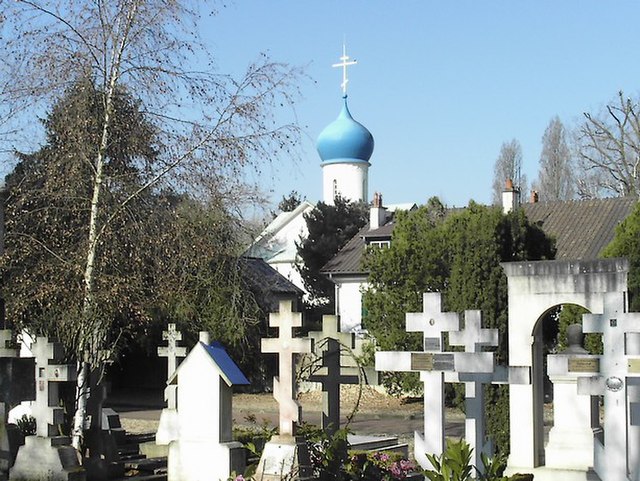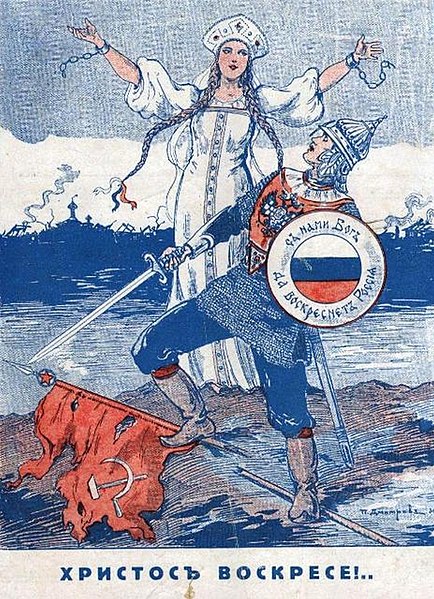The term Harbin Russians or Russian Harbinites refers to several generations of Russians who lived in the city of Harbin, Heilongjiang, China. Russian settlers were responsible for turning Harbin into a Russian city with the majority of the population being from Russian ethnic groups, from approximately 1898 to the mid-1960s. Harbin, a major junction city on the Chinese Eastern Railway (CER), came successively under the control of the Qing dynasty, under Russia's sphere of influence, the Republic of China, Japanese puppet state Manchukuo and the People's Republic of China in this period.
Blagoveshchensky (Annunciation) Church, a Russian Orthodox church in Harbin
Russian orthodox churchyard in Harbin
Russian advertisements in Harbin
Russian Orthodox Saint Sofia Church built in 1907, Harbin
White Russian émigrés were Russians who emigrated from the territory of the former Russian Empire in the wake of the Russian Revolution (1917) and Russian Civil War (1917–1923), and who were in opposition to the revolutionary Bolshevik communist Russian political climate. Many White Russian émigrés participated in the White movement or supported it. The term is often broadly applied to anyone who may have left the country due to the change in regimes.
Sainte-Geneviève-des-Bois Russian Cemetery in Sainte-Geneviève-des-Bois, Essonne, France, near Paris, is a necropolis of White Russians.
White propaganda poster, c. 1932; the text at the bottom, in Church Slavonic, reads "Christ Is Risen!.."; the top of the shield reads "God is with us", and the lower half "Let Russia arise", echoing "Let God arise" from Psalm 67 (68 in Western numbering)






